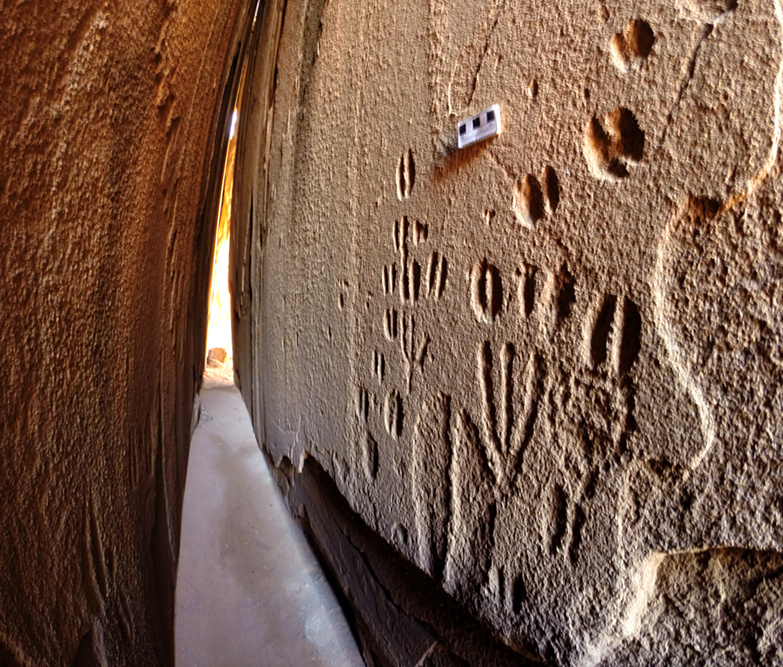Namibia: thousand-year-old engravings of exceptional precision have allowed specialists to identify 39 species of animals

Outstanding panel from the RAS 6 rock art site, with extraordinarily detailed depictions of giraffes and ostriches (digitally enhanced images of the engravings; photographs and illustrations by P. Breunig) / Plos One
Several thousand years ago between 5000 and 1000 BCE, magnificent carvings were made by hunter-gatherers in the red sandstone mountains of Doro! Nawas in Namibia.
Thanks to the exceptional precision of these engravings, indigenous experts familiar with the places and subjects studied managed to identify almost all of the species represented as well as their sex and even... their age! The results of the study were published in the journal Plos One.
39 different animal species identified
Among the hundreds of engravings found on the sandstone rocks, human figures, animals, birds and numerous footprints have been identified. The in-depth study of 513 engravings allowed indigenous experts to recognize 39 different animal species.
Certain species such as the rhino, the baboon, the warthog and the zebra still live in arid areas near these mountains. But others, more accustomed to humid environments, such as the blue wildebeest, the bushpig and the open-billed stork no longer live in the region today. According to the researchers, this may mean that the region was wetter thousands of years ago or that these animals were previously observed by the artists during visits to other regions.

Outstanding panel from the RAS 6 rock art site. This is the most visible panel at RAS 6, featuring extraordinarily detailed depictions of giraffes and ostriches (top: engravings in their original state; bottom: digitally enhanced images of the engravings; photographs and illustrations by P. Breunig) / Plos One
The species, sex, age and legs of the animals were identified thanks to the precision of the engravings
These engravings highlight the extraordinary representational abilities of ancient artists because the attention to detail they demonstrated allowed indigenous trackers to identify, in 90% of cases, the species, sex, age and specific leg of the animals. animals and humans engraved in the rock. According to the study, certain species, such as giraffe, kudu, springbok, guinea fowl, rhino and ostrich were favored more than others. The ycterope, the cheetah, the elk, the jackal or the porcupine were much less represented. Experts also noted a higher concentration of adult male animals engraved on the rocks.
For anthropologist Gary Haynes, who was not involved in the study, these identifications constitute an “impressive and challenging” contribution to our understanding of prehistoric rock art and go “well beyond the general capacity of archaeologists to fully appreciate such engravings”.
?What were these engravings used for
According to indigenous experts Tsamgao Ciqae, Ui Kxunta and Thui Thao, these very diverse engravings were perhaps used as an educational tool for new arrivals, to help them understand the different animals present in the region. But this theory has some limits because the galleries were in certain places poorly lit or located in a narrow corridor and therefore not very suitable for use as classrooms. Indeed, certain images, difficult to access, were sculpted at ground level along the interior walls of a narrow crevasse: to observe them, you had to lie down on the ground and slip through a crack!
!The mystery surrounding the role of these engravings therefore remains to be clarified

The narrow corridor RAS 8-N, with carvings on both sides extending to the lower exfoliated rock face; from the point of view of the photographer at the entrance, he is approximately three meters down the corridor (photography: T. Lenssen-Erz).
Sources: journals.plos.org / science.org

